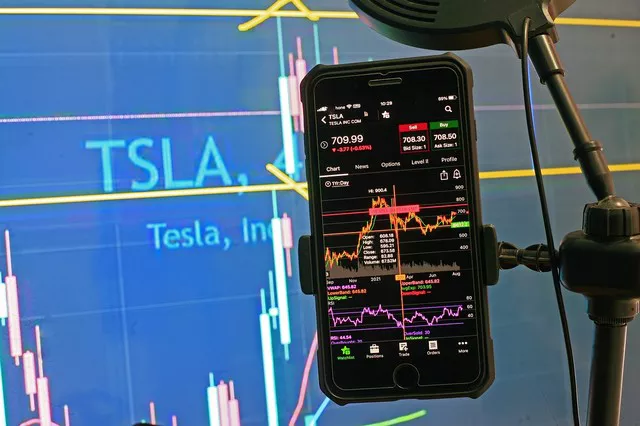The Chicago Mercantile Exchange (CME) is one of the largest and most influential derivatives exchanges in the world. It serves as a hub for trading various financial instruments, including futures contracts, options, and more. In this comprehensive guide, we will explore the key aspects of CME, including its history, structure, trading products, and the role it plays in global financial markets. By understanding CME’s significance and offerings, investors and traders can make informed decisions and navigate the complexities of the exchange.
History and Background of CME
Founding and Evolution:
Establishment: CME was founded in 1898 as the Chicago Butter and Egg Board and later expanded to include other agricultural commodities.
Transformation: Over the years, CME evolved into a diversified derivatives exchange, incorporating various financial instruments and expanding its global reach.
Mergers and Acquisitions: CME went through several significant mergers and acquisitions, including the merger with the Chicago Board of Trade (CBOT) in 2007 and the acquisition of the New York Mercantile Exchange (NYMEX) in 2008.
Global Influence and Importance:
Market Leadership: CME has established itself as a leader in the derivatives market, both in terms of trading volume and product innovation.
International Reach: The exchange operates globally, providing access to traders and investors from around the world, facilitating efficient price discovery and risk management.
Risk Mitigation: CME’s role in facilitating derivative trading plays a crucial role in managing risk for various market participants, including hedgers and speculators.
Structure and Operations of CME
Exchange Structure:
Membership and Ownership: CME operates as a publicly-traded company, with membership reserved for authorized individuals and firms who meet specific criteria.
Trading Platforms: CME provides electronic trading platforms, including the CME Globex electronic trading system, allowing participants to trade a wide range of financial products.
Product Offerings:
Futures Contracts: CME offers a vast array of futures contracts, covering various asset classes, including commodities, currencies, interest rates, and equity indices.
Options Contracts: In addition to futures contracts, CME provides options contracts on select futures, allowing market participants to hedge risk or take speculative positions.
Clearing and Settlement: CME operates a central clearinghouse that guarantees the performance of trades, ensuring the financial integrity of the market.
Market Participants:
Hedgers: Market participants, such as producers, consumers, and financial institutions, utilize CME to hedge their exposure to price fluctuations in underlying assets.
Speculators: Traders and investors seeking profit from price movements actively engage in speculative trading on CME.
Market Makers: Designated market makers provide liquidity and maintain orderly markets by quoting bid and ask prices for various products.
Key Features and Benefits of CME
Liquidity and Market Efficiency:
Deep Liquidity: CME’s global reach and diverse range of products attract a large number of market participants, resulting in deep liquidity and narrower bid-ask spreads.
Price Transparency: CME provides real-time market data and trading information, enabling market participants to make well-informed trading decisions.
Efficient Price Discovery: The continuous trading on CME facilitates efficient price discovery, ensuring fair market prices for various financial instruments.
Risk Management and Hedging:
Hedging Tools: CME’s futures and options contracts allow market participants to manage and mitigate price risk associated with their underlying assets or portfolios.
Portfolio Diversification: By trading CME products, investors can diversify their portfolios, spreading risk across different asset classes and markets.
Margin Requirements: CME’s margin system helps mitigate counterparty risk and ensures that participants have sufficient collateral to cover potential losses.
Access to Global Markets:
International Exposure: CME provides access to global markets, allowing participants to trade and gain exposure to various economies and regions.
Cross-Asset Trading: Traders can engage in spread trading, which involves taking positions in related futures contracts to profit from price differentials or market inefficiencies.
Market Flexibility: CME’s extended trading hours provide flexibility for participants in different time zones and allow them to react to global market events.
Risk and Considerations
Market Volatility:
Price Fluctuations: CME products are subject to market volatility, and prices can experience significant movements, presenting both profit opportunities and risks.
Market News and Events: Traders need to stay informed about market news, economic indicators, and geopolitical events that can impact the prices of CME products.
Risk Management Strategies: Proper risk management, including the use of stop-loss orders and position sizing, is essential when trading CME products.
Leverage and Margin Requirements:
Leverage Potential: Trading on CME often involves the use of leverage, amplifying potential profits but also increasing the risk of substantial losses.
Margin Requirements: Traders must maintain sufficient margin levels to support their positions, as failure to do so may result in forced liquidation and additional losses.
Understanding Margin Calls: Traders should be aware of the margin call process and the potential need to provide additional funds to meet margin requirements.
Regulatory Environment:
Compliance and Oversight: CME operates within a regulatory framework to ensure fair and transparent markets and protect the interests of market participants.
Regulatory Changes: Traders and investors should stay informed about regulatory updates that may impact trading requirements, margin rules, and other market regulations.
International Considerations: CME’s global reach necessitates understanding and complying with regulations in different jurisdictions where trading activities take place.
Conclusion
The Chicago Mercantile Exchange (CME) is a prominent derivatives exchange that plays a crucial role in global financial markets. Understanding the structure, operations, and benefits of CME is essential for traders and investors looking to participate in the exchange’s wide range of products. By comprehending the features, risks, and considerations associated with CME, market participants can make informed decisions and leverage the exchange’s offerings to manage risk, achieve portfolio diversification, and access global market opportunities.


